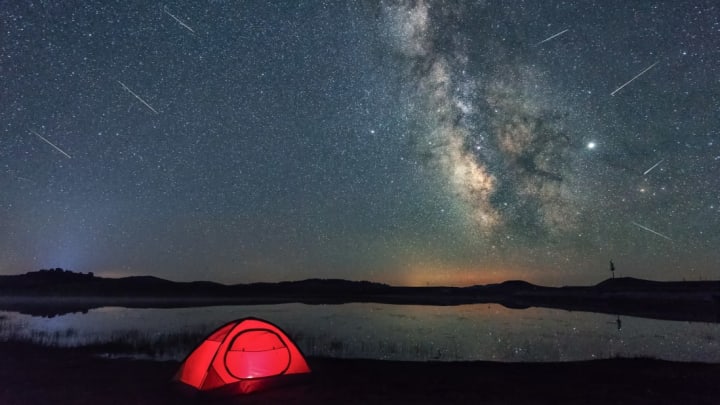Astronomy fans wait all year for the Perseid meteor shower in August. At its peak, it consistently produces dozens of shooting stars per hour, making it one of the most spectacular and reliable meteor showers visible from Earth. Here's what you need to know to see it in 2021.
What Is the Perseid Meteor Shower?
Earth passes through the tail of the comet Swift-Tuttle on an annual basis. When this happens, rocks from its debris field burn up in our atmosphere, creating a dazzling shooting star effect.
While many meteor showers produce just a handful of visible shooting stars per hour, the Perseids peak at 60 to 150 meteors most years. They're named for Perseus, the constellation the meteors appear to originate from, but you'll be able to spot them throughout the night sky.
When to See the Perseid Meteor Shower
This year, the Perseid meteor shower will reach its peak on the nights of Thursday, August 12, and Friday, August 13. In recent years, the moon has made it difficult to view the shower, but that won't be the case in 2021. The Perseids' peak comes just a few days after a new moon. On August 12 and 13, a dim waxing crescent moon will set early in the evening, leaving dark skies and perfect stargazing conditions. You can expect to see up to 100 shooting stars per hour on these nights.
The early morning hours—between midnight and sunrise—tend to be the best time to catch a meteor shower. The Perseids are brighter than most showers, so it's worth looking up even if you live in an area that's affected by some light pollution.
